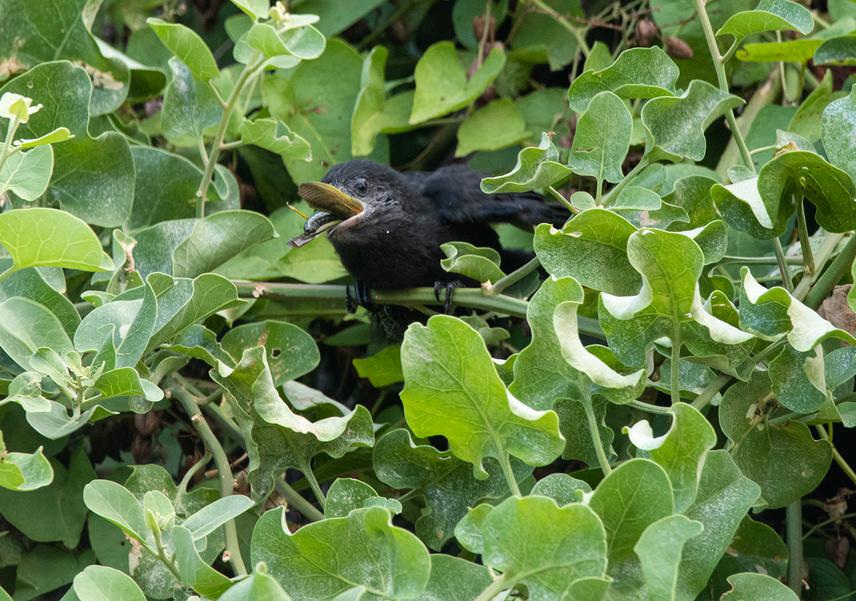Cristian Poveda
The Smooth-billed Ani Crotophaga ani, hereafter ani, is a cuculid that was introduced to Galapagos by humans in the 1960s. Since then, it has reached almost all the main islands of this archipelago. It threatens the unique and sensitive ecosystems of the archipelago in numerous ways including through predation, competition and spread of invasive species. While there is interest from many parties in controlling the population, and traps have been developed to facilitate this, there is limited knowledge about how to do this efficiently, and a lack of basic data such as territory sizes, movement patterns, and dietary habits.

A fledgling feeding on a Schistocerca grasshopper, endemic to Galapagos. © Agustín Gutiérrez.
As part of my PhD with Dr Christopher Kaiser-Bunbury at the Centre for Ecology and Conservation, University of Exeter, UK, and in collaboration with the Charles Darwin Foundation, we have designed a project to gather knowledge on the ecology of anis to inform the eradication or control of the species. It comprises several chapters, one of which – the focus of this application - is to tag and track anis in Galápagos to better understand their behaviour and movements. In particular, the questions being asked include:
How large, and how defined, are ani breeding territories?
How do groups use their territories in the breeding season, and how much can we predict their movements at different times of day/year?
Do anis remain in their breeding groups outside of the breeding season? If not, do they reform the same groups the following year?
How far do individual anis move outside of the breeding season?
We know that anis lay multiple nests in a breeding season – are these all in the same area?
If nests are removed, do they construct a new one in the same place, or in a new site?
Does a breeding group always use the same night-time roosting site? What is their roosting behaviour outside of the breeding season?
Given that they are not typically long-distance fliers, how/when/why do anis move between different islands?
Answering these will enable us to support the GNPD to plan efficient large-scale eradication of anis and increase the potential success of reintroductions of endemic species in the archipelago.
Header: Group of Smooth-billed Ani perched in the highlands of Floreana Island. © Agustín Gutiérrez.